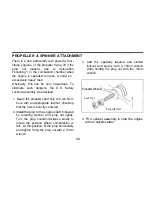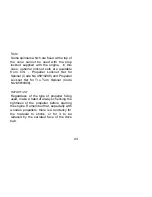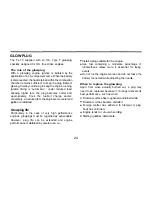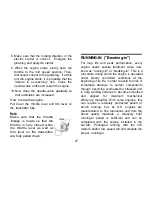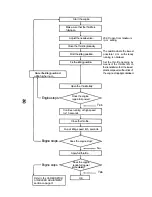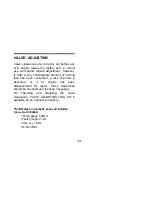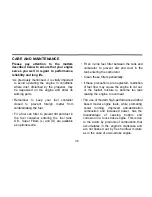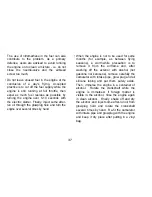
On the contrary, prolonged low speed running
may cause the oil in the fuel gelled, which may
result in seizure of the piston and cylinder liner.
The recommended procedure is as follows:
1. Use the same fuel and prop as you intend
for flying your model.
2. Open the needle-valve 2.5 turns from the
fully closed position and start the engine.
3. Open the throttle slowly to the mid speed
position, and disconnect the current to the
glowplug.
4. Now open the throttle slowly to the fully
opened position and run the engine for no
more than 5 seconds with the needle-valve
tuned to produced near maximum r.p.m.,
then, immediately, slow the engine down
again by opening the needle-valve
approximately one turn. The rich mixture, so
induced, will cool the engine, at the same
time providing increased lubrication.
5. Repeat this process, alternately running the
engine fast and slow by means of the
needle-valve, while keeping the throttle fully
open, then begin to extend the short
periods of high-speed operation until two
tanks of fuel have been consumed.
WARNING:
When ground running the engine, avoid
dusty or sandy locations. If dust or grit is
drawn into the engine, this can be a
ruinous effect, drastically shortening
engine life ion a matter of minutes.
6. Following the initial running-in session,
check for any looseness in the installation
due to vibration, then allow the engine a
period of moderately rich operation in flight.
7. For the first flight, have the needle-valve set
on the rich side and adjust the throttle trim
on the transmitter so that the engine does
not stop when the throttle is closed to the
idle setting.
28









